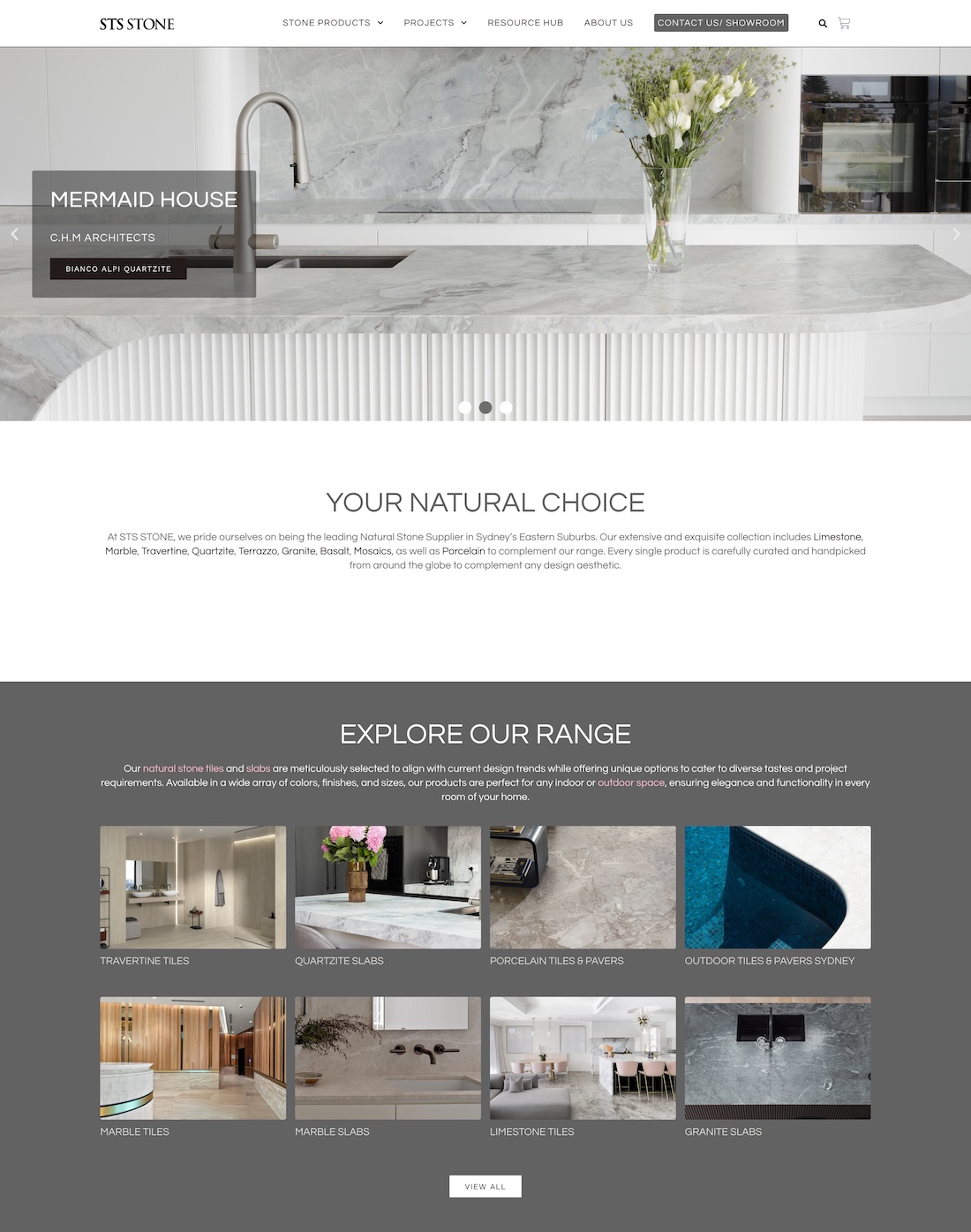The Brief (and Problem)
STS STONE is one of Australia’s leading natural stone suppliers in Sydney’s eastern suburbs.
The previous website was designed and developed years ago using WordPress and various combinations of tools, plugins and custom code. This resulted in a low-performing score, difficulty in maintaining and keeping up-to-date, security issues and a huge database and storage space, making it expensive to host. Additionally, adding and integrating third-party tools such as analytics, marketing, and CMS apps was impossible.
SEO and accessibility were also impacted mainly by using the wrong media formats, large file sizes and no meta tags.
The ordering samples experience (UX) required a few steps and was developed as what seems like an afterthought rather than a complete logical flow of the user experience
The Process
The rebuild of the website had to be managed carefully and in steps to keep the data intact and the budget under control. It’s like renovating an old house; there are many unknowns, and each demolition might reveal unexpected problems. The steps I’ve taken:
- Complete site auditing. This included backend structure, plugins, themes, code, database, broken links, media, SEO and accessibility structure.
- UX auditing. How customers experience the website. Loading times, CTA and logic, sample carts and ordering flow, content presentation and information architecture.
- Setting up a staging clone and disabling all unnecessary plugins (more than 50), themes and templates. Stripping off the website front-end UI.
- Installing only the necessary plugins and activating required services. Installing a new blank theme and a page builder. Cleaning up the database, batch processing media and deleting orphan code.
- Designing new theme templates and components such as the header, footer, product pages, content and blog pages.
- Setting up a consistent and scalable style guide.
- Setting up a proper back-end product inventory system and ordering flow.
- Connecting third-party tools and running pre-launch tests.
The Outcome
The outcome is a website using a fraction of the code, optimised, has a centralised theme and style management section, an e-commerce catalogue infrastructure that is easy to maintain, and a smaller DB and overall size.
SEO and accessibility scores are higher and the UX is more consistent and logical.




